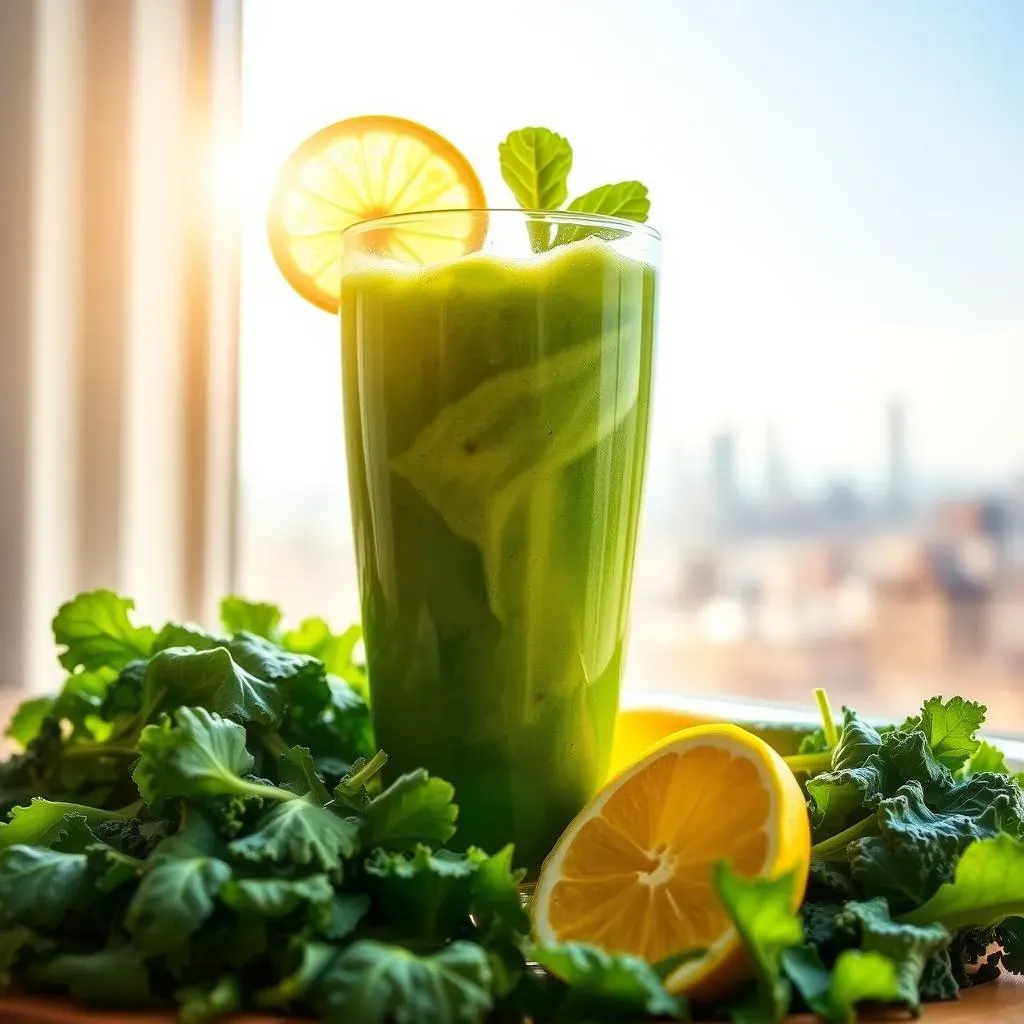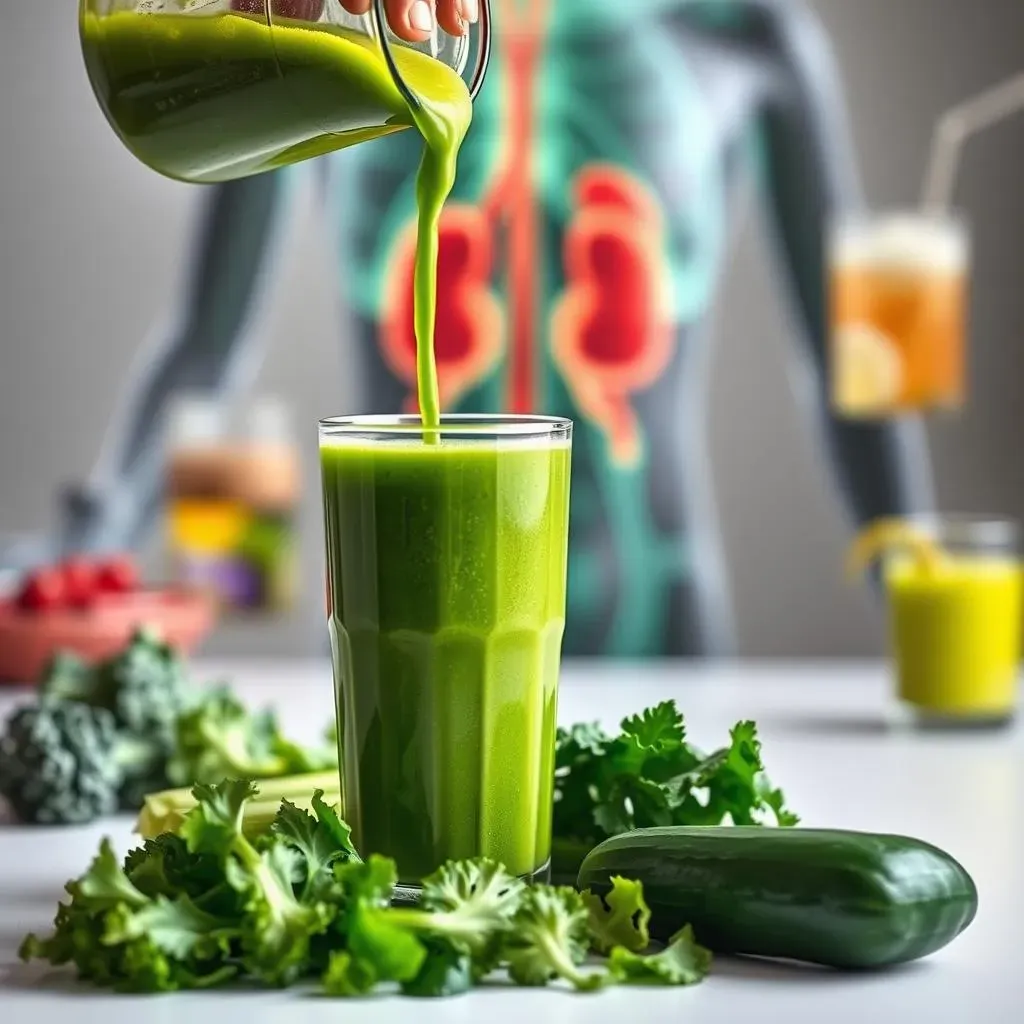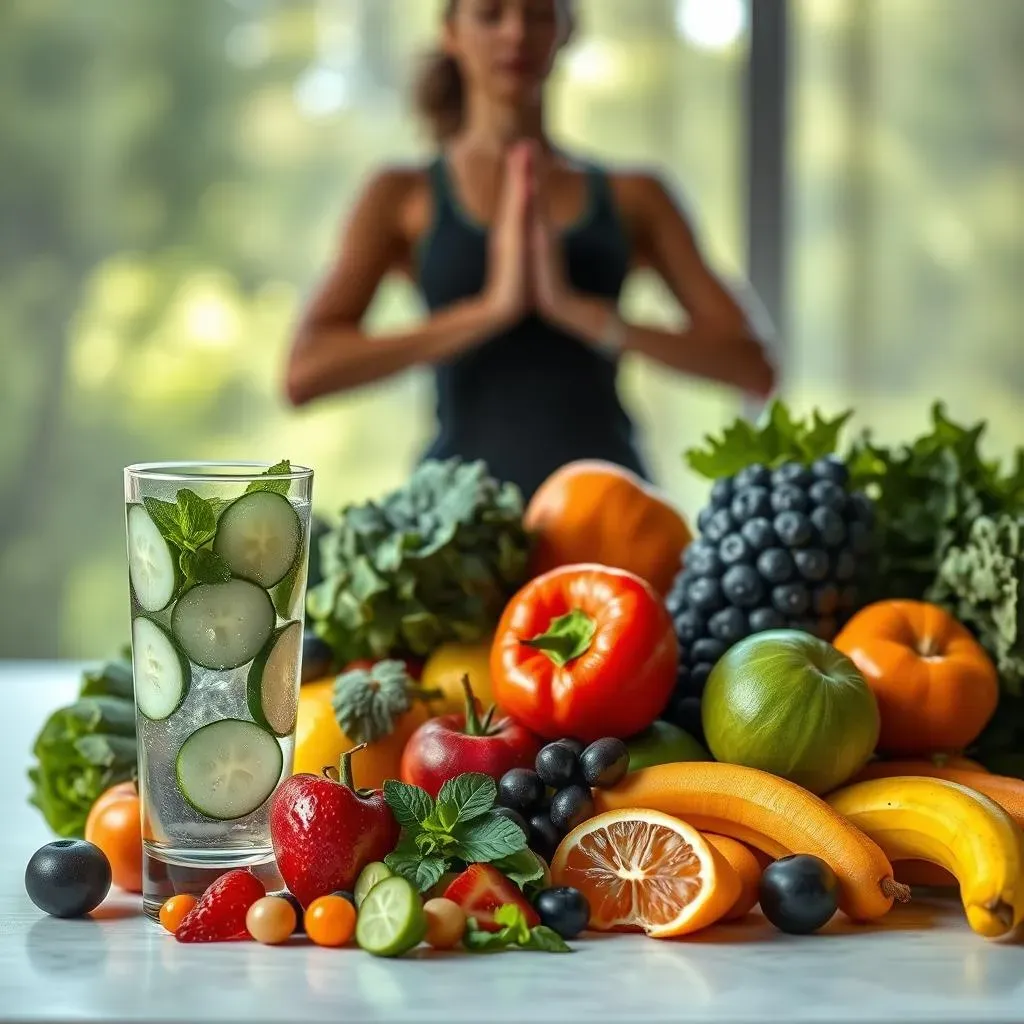Table of Contents
In a world obsessed with quick fixes and instant results, the promise of a green detox can be incredibly alluring. The idea of flushing out toxins, shedding pounds, and achieving radiant health with a simple green concoction is hard to resist. But is green detox good for you, or is it just another fleeting health fad? This is the question we'll be tackling head-on. We'll sift through the hype and uncover the potential benefits, as well as the often-overlooked risks, of incorporating a green detox into your routine. We'll explore what a green detox actually entails, examining the common ingredients and purported health claims. Then, we'll dive into the science, or lack thereof, behind these claims, separating fact from fiction. Finally, we'll provide practical advice on how to approach a green detox safely and effectively, if you choose to do so, and offer sustainable alternatives for achieving long-term wellness. So, buckle up and get ready to discover the truth about green detoxes and whether they live up to the hype.
Potential Benefits of a Green Detox: What the Hype Says

Potential Benefits of a Green Detox: What the Hype Says
The Allure of Concentrated Nutrients
so what's the big deal with green detoxes anyway? The main selling point is that they're a super convenient way to flood your body with nutrients. Think about it: cramming a whole bunch of spinach, kale, cucumber, and maybe even some fruit into a blender is way easier than actually eating all those veggies. You get a concentrated dose of vitamins, minerals, and antioxidants in one quick shot. Proponents claim this can lead to a whole host of benefits, from boosted energy levels and improved digestion to clearer skin and a stronger immune system. It's like a nutritional power-up for your body.
And let's be real, who doesn't want a quick fix? In our fast-paced world, the idea of shortcutting your way to better health is incredibly appealing. Green detoxes are marketed as a simple solution for those who struggle to eat enough fruits and vegetables. They seem like a guilt-free way to compensate for dietary shortcomings and give your body the nutrients it craves. The promise of feeling healthier and more vibrant with minimal effort is a powerful draw.
Antioxidant Boost and Alkalizing Effects
Beyond the basic vitamins and minerals, green detoxes are often touted for their high antioxidant content. Antioxidants are like tiny bodyguards that protect your cells from damage caused by free radicals. Free radicals are unstable molecules that can contribute to aging, inflammation, and even chronic diseases. Green vegetables are packed with antioxidants like vitamins C and E, as well as phytonutrients like chlorophyll and carotenoids. By flooding your system with these antioxidants, a green detox is believed to help combat oxidative stress and reduce your risk of various health problems.
Another popular claim is that green detoxes have an alkalizing effect on the body. The theory is that modern diets, often high in processed foods, sugar, and meat, can create an acidic environment in the body. This acidity is thought to contribute to inflammation and disease. Green vegetables, on the other hand, are considered alkaline-forming. By consuming a green detox, you're supposedly helping to restore your body's pH balance and create a more optimal environment for health. However, it's important to note that the body has its own sophisticated mechanisms for regulating pH, and the impact of diet on this balance is still a subject of ongoing research.
The Dark Side of Green Detox: Risks and Side Effects You Should Know

The Dark Side of Green Detox: Risks and Side Effects You Should Know
The Fiber Fiasco: Missing Out on Essential Roughage
Alright, so we've talked about the potential perks, but let's get real about the downsides. One of the biggest issues with green detoxes is the lack of fiber. When you juice fruits and vegetables, you're essentially stripping away the fiber-rich pulp. Fiber is like the unsung hero of your digestive system. It helps regulate bowel movements, keeps you feeling full, and even helps control blood sugar levels. Without it, you're missing out on a whole host of benefits. Plus, fiber acts like a prebiotic, feeding the good bacteria in your gut. These bacteria are crucial for digestion, immunity, and even mental health.
Think of it this way: eating an apple is way better than just drinking apple juice. You get the sweetness and hydration from the juice, but you also get the fiber that keeps you feeling satisfied and supports your gut health. The same goes for green vegetables. Juicing them might give you a concentrated dose of vitamins, but you're missing out on the bulk and benefits of the whole food.
Here's a quick comparison:
Nutrient | Green Juice | Whole Green Vegetables |
|---|---|---|
Vitamins & Minerals | High | High |
Fiber | Low to None | High |
Satiety | Low | High |
Blood Sugar Impact | Higher | Lower |
Sugar Overload: A Hidden Danger
Another potential pitfall of green detoxes is the sugar content, especially if you're adding fruit to the mix. While fruits are packed with vitamins and antioxidants, they're also a source of natural sugars. When you juice them, you're essentially concentrating these sugars and removing the fiber that would normally slow down their absorption. This can lead to a rapid spike in blood sugar levels, followed by a crash. This is especially problematic for people with diabetes or insulin resistance, as it can disrupt their blood sugar control. Even if you don't have diabetes, frequent blood sugar spikes can contribute to energy crashes, mood swings, and even weight gain.
Also, let's not forget that store-bought green juices often contain added sugars to improve the taste. These added sugars can negate many of the health benefits of the juice and contribute to a whole host of health problems, from weight gain and tooth decay to an increased risk of chronic diseases. Always check the label carefully and opt for unsweetened versions whenever possible.
Oxalate Overload: A Kidney's Nightmare
One of the lesser-known risks of green detoxes is the potential for oxalate overload. Oxalates are naturally occurring compounds found in many plant foods, including spinach, kale, and beets – all common ingredients in green juices. In most people, oxalates are harmless and are simply excreted in the urine. However, in some individuals, particularly those with a history of kidney problems, high oxalate consumption can lead to the formation of kidney stones. Kidney stones are hard, crystalline masses that can cause excruciating pain as they pass through the urinary tract.
Excessive oxalate intake can also contribute to a condition called oxalate deposition, where oxalate crystals accumulate in various tissues throughout the body, including the kidneys, bones, and blood vessels. This can lead to inflammation and damage over time. If you have a history of kidney stones or other kidney problems, it's crucial to talk to your doctor before starting a green detox. They may recommend limiting your intake of high-oxalate foods or taking steps to reduce oxalate absorption.
Is a Green Detox Good for You? Examining the Claims vs. Reality

Is a Green Detox Good for You? Examining the Claims vs. Reality
So, is a green detox good for you? Let's cut through the marketing fluff and look at the real deal. The truth is, many of the claims surrounding green detoxes are based more on hype than hard science. While it's true that green vegetables are incredibly good for you, the idea that juicing them into a "detox" concoction magically eliminates toxins and cures all ills is a bit of a stretch. Your body already has a built-in detoxification system – your liver and kidneys – that works tirelessly to filter out waste and toxins. They don't need a green juice to do their job.
The notion of "detoxing" often implies that we're somehow ridding our bodies of harmful substances that have accumulated over time. While it's true that we're exposed to toxins in our environment and food, the idea that a short-term juice cleanse can undo years of unhealthy habits is unrealistic. A much more effective approach is to focus on making sustainable lifestyle changes that support your body's natural detoxification processes, such as eating a healthy diet, drinking plenty of water, getting enough sleep, and exercising regularly.
The "Detox" Myth: What Does It Really Mean?
The word "detox" is thrown around a lot these days, but what does it actually mean? In the context of health and wellness, it typically refers to the process of removing toxins from the body. However, the scientific definition of detoxification is much more specific and refers to the metabolic processes by which the body breaks down and eliminates harmful substances. These processes are primarily carried out by the liver and kidneys, and they're essential for maintaining health.
When people talk about "detoxing" with green juices, they're often referring to a more general sense of cleansing and rejuvenation. They believe that these juices can help to flush out toxins, reduce inflammation, and boost energy levels. While it's true that the nutrients in green vegetables can support these processes, it's important to remember that your body is already equipped to handle detoxification on its own. A healthy diet and lifestyle are far more effective than any quick-fix detox.
Here's a table summarizing the key differences:
Concept | Layperson's "Detox" | Scientific Detoxification |
|---|---|---|
Definition | General cleansing and rejuvenation | Metabolic processes by liver and kidneys |
Methods | Juice cleanses, detox diets | Natural bodily functions |
Evidence | Limited scientific evidence | Well-established biological processes |
Focus | Short-term quick fix | Long-term health and maintenance |
How to Do a Green Detox the Right Way: Tips for Safety and Effectiveness

How to Do a Green Detox the Right Way: Tips for Safety and Effectiveness
Start Slow and Listen to Your Body
so you're still curious about giving a green detox a try? I get it. If you're going to do it, let's do it smart. First things first: don't jump in headfirst. Start slow. Like, really slow. Begin by replacing just one meal a day with a green juice. See how your body reacts. Are you feeling energized? Or are you experiencing digestive upset, headaches, or fatigue? These could be signs that your body isn't happy with the sudden change. Pay attention to these signals and adjust accordingly. Remember, this isn't a race. It's about finding what works best for you.
Also, and this is super important: listen to your body. If you're feeling weak, dizzy, or just generally unwell, stop the detox immediately. It's not worth pushing through discomfort. Your body is telling you something, and it's crucial to respect that. There's no one-size-fits-all approach to health, and what works for your friend or favorite influencer might not work for you. Trust your gut and prioritize your well-being above all else.
Choose Your Ingredients Wisely
The ingredients you use in your green detox can make or break the experience. Opt for organic, locally sourced produce whenever possible. This will minimize your exposure to pesticides and other harmful chemicals. Focus on a variety of leafy greens like spinach, kale, romaine lettuce, and Swiss chard. These are packed with vitamins, minerals, and antioxidants. Add in some low-sugar fruits like green apples, cucumbers, and celery for flavor and hydration. And don't be afraid to experiment with herbs and spices like ginger, turmeric, and cilantro for an extra boost of flavor and health benefits.
However, be mindful of the oxalate content of your ingredients. As we discussed earlier, high oxalate levels can contribute to kidney problems. If you're prone to kidney stones, limit your intake of spinach, kale, and beets. Consider swapping them out for lower-oxalate alternatives like romaine lettuce, arugula, and cucumber. Also, avoid adding too much fruit to your green juice, as this can significantly increase the sugar content. Remember, the goal is to nourish your body, not overload it with sugar.
Here's a sample green detox recipe:
- 1 cup spinach
- 1/2 cup romaine lettuce
- 1/2 cucumber
- 1/4 green apple
- 1/2 inch ginger
- 1/2 cup water
Blend all ingredients until smooth. Add more water if needed to achieve desired consistency.
Don't Forget the Protein and Healthy Fats
One of the biggest mistakes people make when doing a green detox is neglecting protein and healthy fats. Green juices are primarily composed of carbohydrates, which can lead to blood sugar imbalances and energy crashes if not balanced with other macronutrients. Protein is essential for building and repairing tissues, supporting immune function, and keeping you feeling full and satisfied. Healthy fats are crucial for hormone production, brain function, and nutrient absorption.
To ensure you're getting enough protein and healthy fats, consider adding a scoop of protein powder to your green juice or pairing it with a small handful of nuts or seeds. You can also add a tablespoon of avocado or flaxseed oil for an extra dose of healthy fats. These additions will help to stabilize your blood sugar levels, keep you feeling energized, and prevent nutrient deficiencies. Remember, a balanced approach is key to a successful and sustainable detox.
Beyond the Green Detox: Sustainable Healthy Habits for LongTerm Wellness

Beyond the Green Detox: Sustainable Healthy Habits for LongTerm Wellness
Embrace a Rainbow Diet: Variety is the Spice of Life
so you've seen the light about green detoxes not being the be-all and end-all. Fantastic! Now, let's talk about building a foundation of sustainable health. And guess what? It's way more fun and delicious than chugging down green sludge for days. The key is embracing a rainbow diet. Think beyond just greens and load up on a wide variety of colorful fruits and vegetables. Each color represents different phytonutrients, antioxidants, and vitamins that work synergistically to support your health.
Red bell peppers, blueberries, sweet potatoes, broccoli – the possibilities are endless! Aim to fill your plate with as many different colors as possible at each meal. Not only will this ensure you're getting a broad spectrum of nutrients, but it'll also make your meals more exciting and satisfying. Ditch the restrictive mindset and embrace the abundance of nature's bounty. Trust me, your taste buds and your body will thank you for it.
Hydration is Key: Water is Your Best Friend
We can't talk about long-term wellness without mentioning hydration. Water is absolutely essential for every single function in your body, from digestion and nutrient absorption to waste elimination and temperature regulation. Aim to drink at least eight glasses of water a day, and even more if you're active or live in a hot climate. Carry a reusable water bottle with you and sip on it throughout the day. Make it a habit, not a chore.
If you find plain water boring, try infusing it with fruits, vegetables, or herbs. Cucumber and mint, lemon and ginger, or berries and basil are all delicious and refreshing combinations. You can also drink herbal teas, which are naturally hydrating and packed with antioxidants. Just be mindful of sugary drinks like sodas and juices, which can actually dehydrate you and contribute to health problems.
Here are some tips to stay hydrated:
- Carry a reusable water bottle
- Set reminders to drink water throughout the day
- Infuse water with fruits and herbs
- Drink herbal teas
- Eat water-rich foods like watermelon and cucumbers
Move Your Body: Find Joy in Physical Activity
Exercise isn't just about burning calories and building muscle. It's about feeling good in your body, reducing stress, and boosting your overall well-being. Find an activity that you genuinely enjoy, whether it's dancing, hiking, swimming, cycling, or yoga. The key is to make it something you look forward to, rather than a chore you dread. Aim for at least 30 minutes of moderate-intensity exercise most days of the week.
Don't be afraid to experiment with different activities until you find something that clicks. You can also break up your exercise into smaller chunks throughout the day. A 10-minute walk in the morning, a 10-minute dance break in the afternoon, and a 10-minute stretching session in the evening can be just as effective as a longer workout. The most important thing is to move your body regularly and consistently.
Activity | Benefits |
|---|---|
Walking | Improves cardiovascular health, boosts mood |
Yoga | Increases flexibility, reduces stress |
Swimming | Low-impact, full-body workout |
Dancing | Fun, improves coordination |
The Final Verdict: Is a Green Detox Good for You?
Ultimately, the answer to whether a green detox is "good" for you is nuanced. While green juices and detox programs can provide a temporary boost of vitamins and minerals, they are not a magic bullet for health. The potential benefits must be weighed against the risks, and a sustainable, balanced approach to nutrition should always be the priority. Instead of relying on quick fixes, focus on incorporating more whole, unprocessed foods into your diet, staying hydrated, and engaging in regular physical activity. If you're considering a green detox, do your research, listen to your body, and consult with a healthcare professional to ensure it's a safe and appropriate choice for you. Remember, true wellness is a journey, not a destination, and it's built on consistent, healthy habits, not fleeting trends.